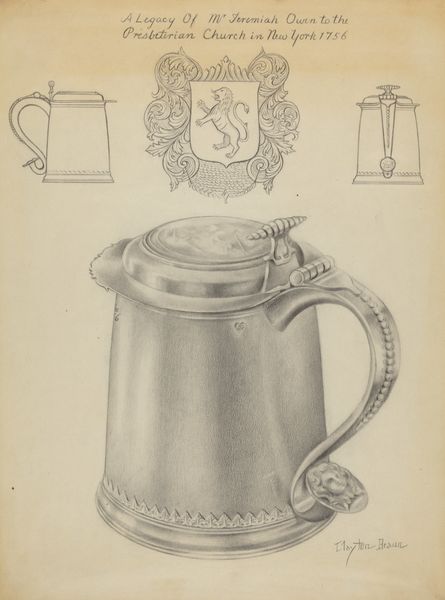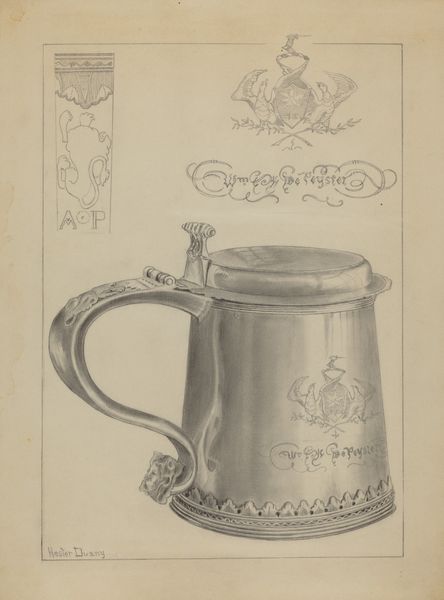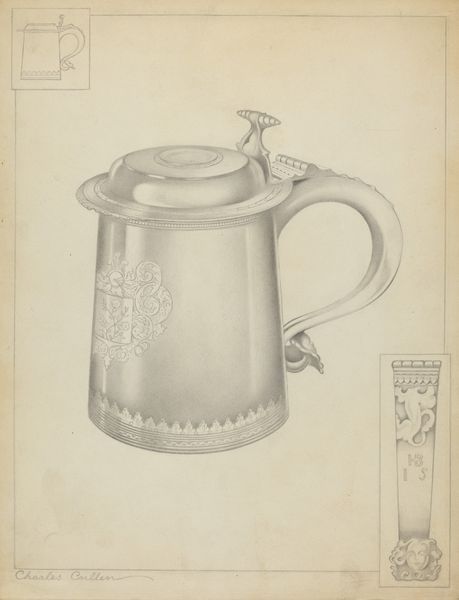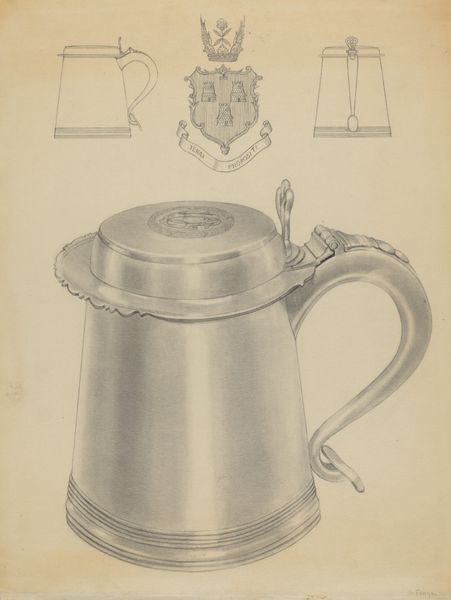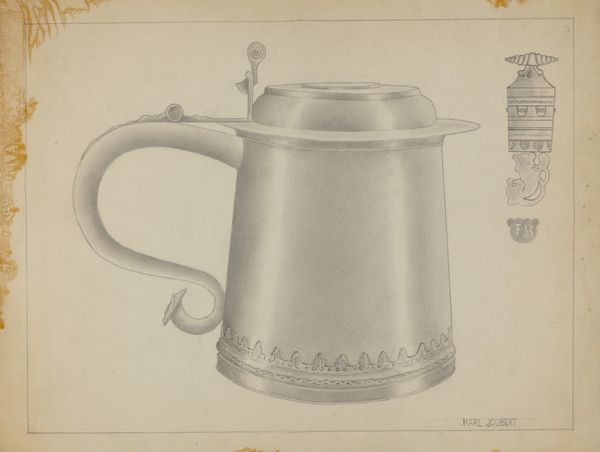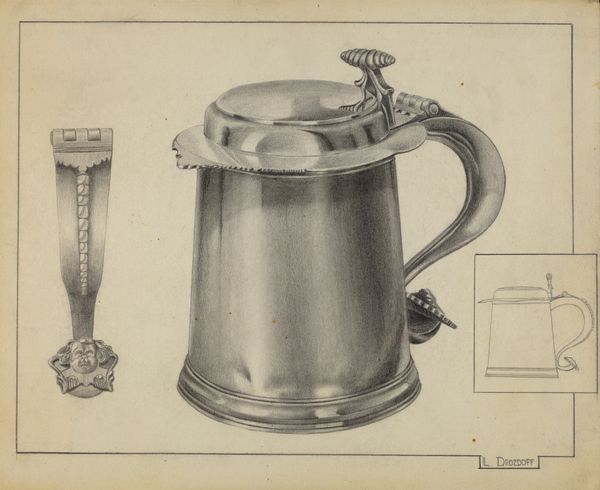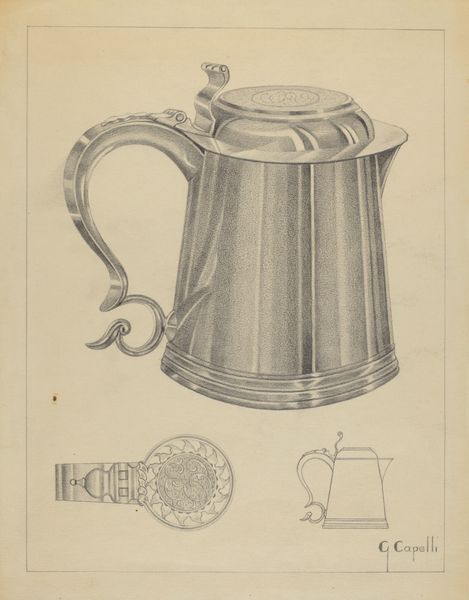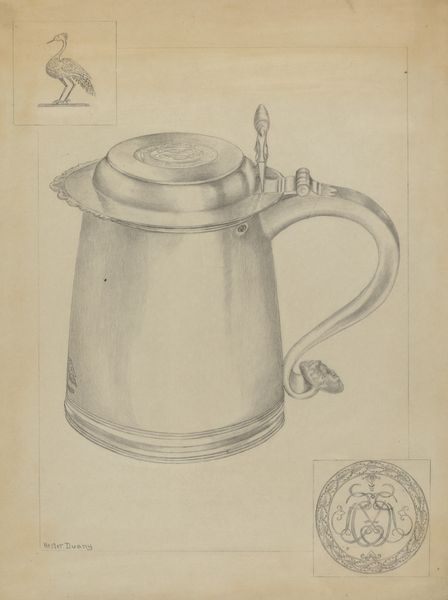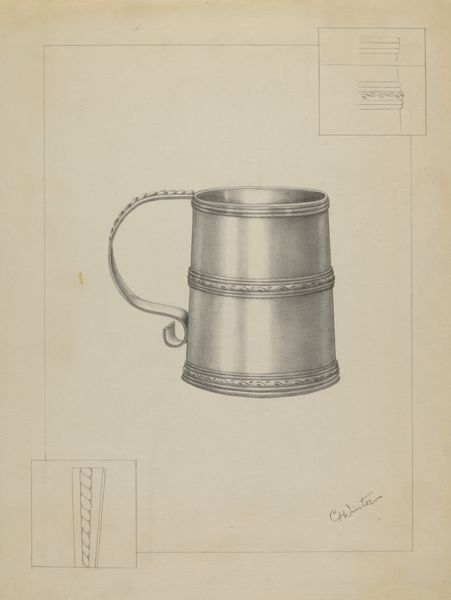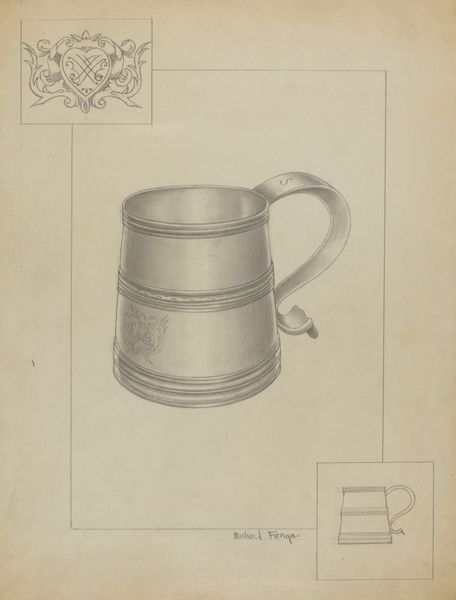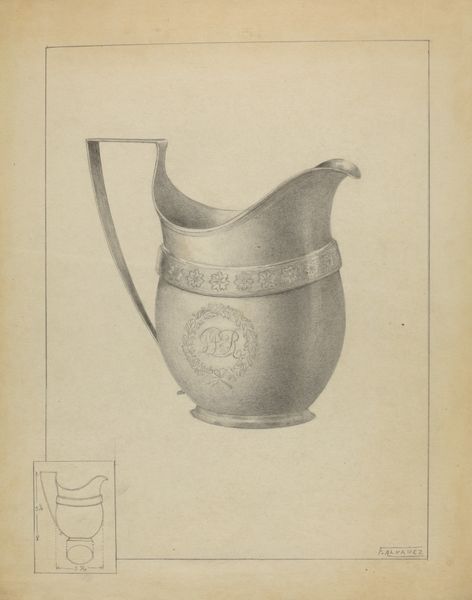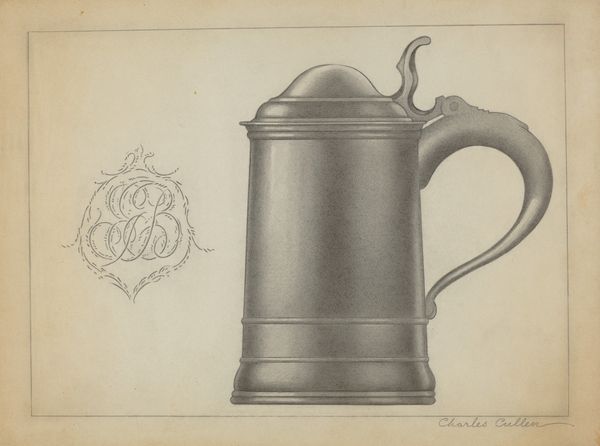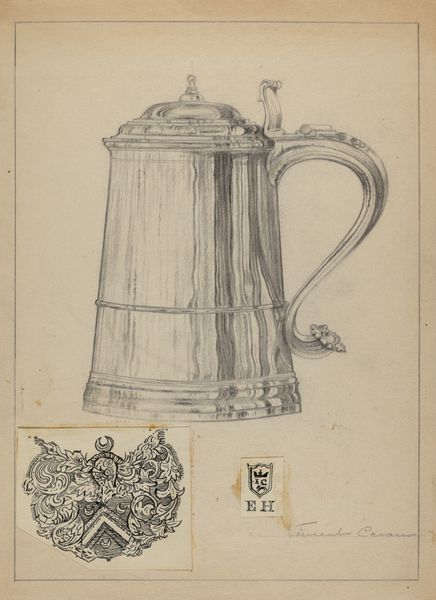
drawing, paper, pencil
#
drawing
#
figuration
#
paper
#
pencil drawing
#
pencil
#
academic-art
Dimensions: overall: 35.7 x 28.1 cm (14 1/16 x 11 1/16 in.)
Copyright: National Gallery of Art: CC0 1.0
Editor: Here we have Franklin Hart’s "Pewter Tankard," a pencil drawing on paper from around 1936. It strikes me as a really meticulous study, almost forensic in its detail. What's your take on this, what jumps out at you? Curator: This piece, for me, is deeply rooted in the social and historical context of its time. A seemingly simple drawing of a tankard invites us to consider broader questions of class, consumption, and even colonial power. Editor: Colonial power? I wouldn't have made that connection right away. Curator: Think about it: pewter, historically, was a common material for household items, often signifying a certain level of economic stability. But who had access to these goods, and how were the raw materials sourced? Consider where the metals might have originated and what colonial exploitation was taking place when this artwork was made. How might the creation and depiction of this object be tied to systems of power and oppression? Editor: So, you're suggesting that even in something as ordinary as a tankard, we can see reflections of larger societal inequalities? Curator: Precisely. And consider the meticulous detail. Is this just a study, or is Hart making a statement about the value we place on material objects? Are the added drawings on the periphery offering some context? This piece encourages us to examine the hidden narratives embedded within everyday objects and challenge our assumptions about their cultural significance. Editor: I hadn’t considered those wider narratives. It's incredible how one object can reveal such complex connections to the past and, potentially, the present. Curator: Exactly! It demonstrates how art can act as a powerful lens through which we can examine our own values and complicity in larger systems.
Comments
No comments
Be the first to comment and join the conversation on the ultimate creative platform.
